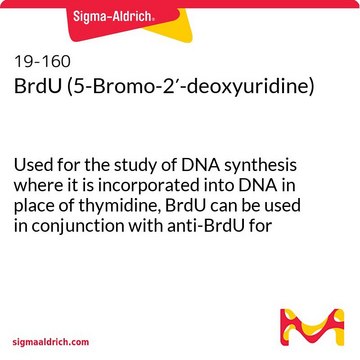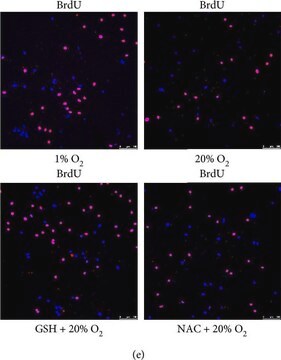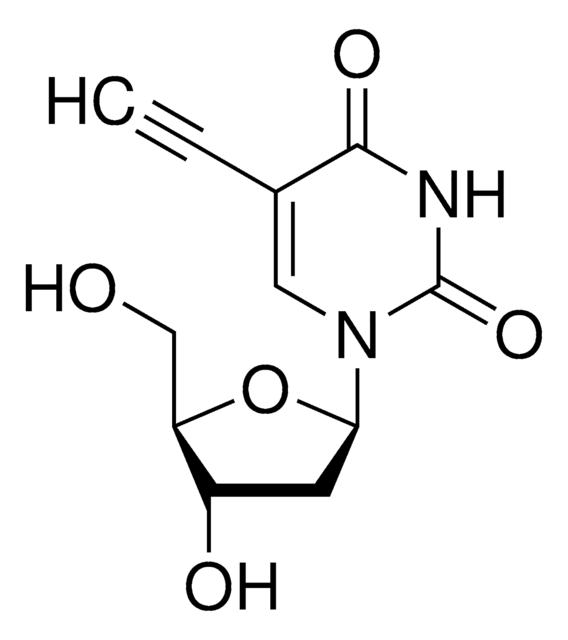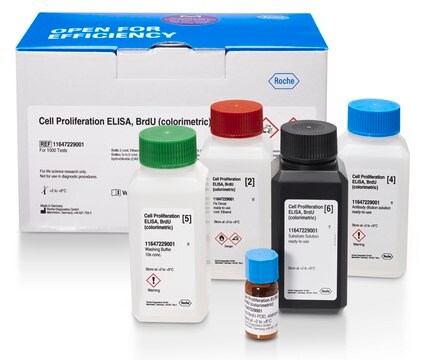203806
5-Bromo-2′-deoxyuridine
Thymidine analog. Useful for the study of DNA synthesis where it is incorporated into DNA in place of thymidine.
Sinonimo/i:
5-Bromo-2′-deoxyuridine, 5-BrdU
About This Item
Prodotti consigliati
Descrizione
RTECS - YU7350000
Livello qualitativo
Saggio
≥98% (HPLC)
Stato
solid
Produttore/marchio commerciale
Calbiochem®
Condizioni di stoccaggio
OK to freeze
Colore
white
Solubilità
water: 10 mg/mL
0.1 M NaOH: 50 mg/mL
DMSO: 50 mg/mL
Condizioni di spedizione
ambient
Temperatura di conservazione
15-25°C
Stringa SMILE
Brc1[c]([nH][c]([n](c1)C2OC(C(C2)O)CO)=O)=O
InChI
1S/C9H11BrN2O5/c10-4-2-12(9(16)11-8(4)15)7-1-5(14)6(3-13)17-7/h2,5-7,13-14H,1,3H2,(H,11,15,16)
WOVKYSAHUYNSMH-UHFFFAOYSA-N
Descrizione generale
Attenzione
Ricostituzione
Altre note
Cattoretti, G., et al. 1993. J. Pathol. 171, 83.
Fukuda, K., et al. 1990. Anal. Quant. Cytol. Histol. 12, 135.
Note legali
Avvertenze
Danger
Indicazioni di pericolo
Consigli di prudenza
Classi di pericolo
Muta. 1B - Repr. 2
Codice della classe di stoccaggio
6.1C - Combustible acute toxic Cat.3 / toxic compounds or compounds which causing chronic effects
Classe di pericolosità dell'acqua (WGK)
WGK 2
Certificati d'analisi (COA)
Cerca il Certificati d'analisi (COA) digitando il numero di lotto/batch corrispondente. I numeri di lotto o di batch sono stampati sull'etichetta dei prodotti dopo la parola ‘Lotto’ o ‘Batch’.
Possiedi già questo prodotto?
I documenti relativi ai prodotti acquistati recentemente sono disponibili nell’Archivio dei documenti.
Il team dei nostri ricercatori vanta grande esperienza in tutte le aree della ricerca quali Life Science, scienza dei materiali, sintesi chimica, cromatografia, discipline analitiche, ecc..
Contatta l'Assistenza Tecnica.







